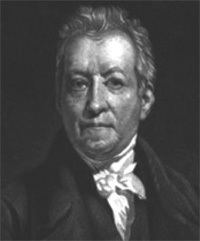Nationality Scottish Name Robert Haldane Occupation Scottish theologian Siblings James Haldane | Years active 1796–1835 Children Margaret Haldane | |
 | ||
Born 17 February 1764 ( 1764-02-17 ) London Known for Christian evangelization Parent(s) James Haldane, 2nd of Airthrey and Katherine Duncan Spouse Catherine Oswald (m. 1785) Books Exposition of the Epistle to, Commentary on Romans, Exposition of Romans, The Books of the Old and New, The Authenticity and Inspir | ||
Nephews Daniel Rutherford Haldane | ||
Robert Haldane (28 February 1764 – 12 December 1842) was a Scottish churchman.
Contents
Biography
Haldane was born in London, the son of James Haldane 2nd of Airthrey House, and his wife Katherine Duncan. His younger brother James Alexander Haldane was also a clergyman. Robert and James attended classes at Dundee Grammar School, the Royal High School in Edinburgh, and the University of Edinburgh.
In 1780 Robert joined HMS Monarch of which his maternal uncle, Adam Duncan, was in command. In the following year he was transferred to HMS Foudroyant. He was on HMS Foudroyant under John Jervis during the night engagement in April 1782 with the French ship Pegase and greatly distinguished himself. Haldane was afterwards present at the relief of Gibraltar in September 1782. Some months later after the peace treaty of 1783 he left the Royal Navy.
Soon after leaving the Navy, he settled on his estate of Airthrey, near Stirling. After selling Airthrey House in 1798 to Robert Abercromby to obtain funding for his mission work, he bought a home at Auchengray, Lanarkshire in 1809.
Family
Robert Haldane, 3rd of Airthrey married Catherine Cochrane Oswald, daughter of George Oswald of Scotstoun, on 24 April 1785. They were married for 58 years. Robert died on 18 December 1842(1842-12-18) (aged 78), Catherine six months afterward.
They had one daughter, Margaret Haldane, who married James Farquhar Gordon in 1805. Margaret died on 29 September 1849.
Church and ministry
Along with his brother, James Haldane, Robert Haldane established 85 churches in Scotland and Ireland. Churches planted by the Haldanes practiced baptism by immersion, weekly communion, and congregational polity (autonomous government). The Haldanes also operated a seminary, and were influenced in their principles by other independent thinkers such as John Glas and Robert Sandeman.
Evangelism
His tutor was David Bogue of Gosport. The earlier phases of the French Revolution excited a sympathy which induced him to avow his strong disapproval of the war with France. As his over-optimistic visions of a new order of things to be ushered in by political change disappeared, he began to direct his thoughts to religious subjects. Resolving to devote himself and his means wholly to the advancement of Christianity, his first proposal for that end, made in 1796, was to organize a vast mission to Bengal, of which he was to provide the entire expense; with this view the greater part of his estate was sold, but the British East India Company refused to sanction the scheme, which therefore had to be abandoned.
In December 1797 he also joined his brother and some others in the formation of the "Society for the Propagation of the Gospel at Home," in building chapels or "tabernacles" for congregations, in supporting missionaries, and in maintaining institutions for the education of young men to carry on the work of evangelization. He is said to have spent more than £70,000 in the course of the following twelve years (1798-1810). He also funded John Campbell's Society for the Education of Africans which initially planned to evangelise in Africa by bringing over native children to be trained as Christian missionaries in Edinburgh. However, owing to an outbreak of small-pox, the group of children remained in the London area at what became known as the African Academy in Clapham.
In the summer of 1816 Robert Haldane visited Europe, first at Geneva and afterwards in Montauban. He lectured and interviewed large numbers of theological students with remarkable effect; among them were César Malan, Frédéric Monod and Jean-Henri Merle d'Aubigné. This circle of men spread the revival of evangelical Protestant Christianity across the continent of Europe (Le Réveil), impacting France, Germany (Die Erweckung) and the Netherlands (Het Reveil). Through conversion and missionary impetus the effects of this revival were felt as far afield as Italy and Hungary.
Haldane lived partly on his estate of Auchengray and partly in Edinburgh at 10 Duke Street (later renamed Dublin Street), and like his brother took an active part, chiefly through the press, in many of the religious controversies of the time.
In 1816 he published a work on the Evidences and Authority of Divine Revelation, and in 1819 the substance of his theological prelections in a Commentaire sur l'Epitre aux Romains. Among his later writings, besides numerous pamphlets on what was known as the Apocrypha controversy, are a treatise On the Inspiration of Scripture (1828), which passed through many editions, and a later Exposition of the Epistle to the Romans (1835), which has been frequently reprinted, and has been translated into French and German.
